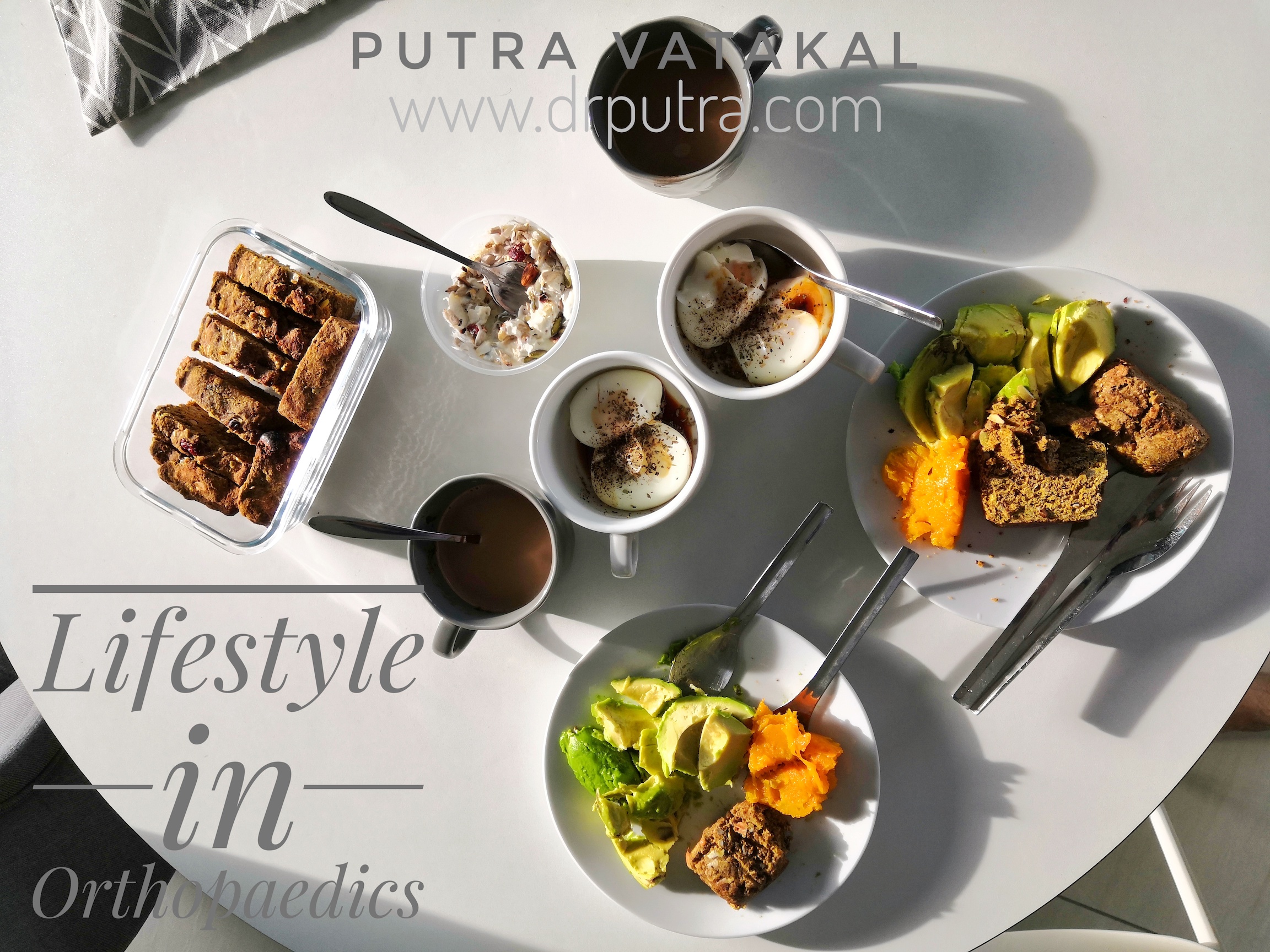Lifestyle in Orthopaedics
Orthopaedics is not all about using knives to cut through skin (and bone).
Most orthopaedic patients can get better by changing their exercise and diet habits. Dr Yvonne Chuon, Lifestyle Medicine Physician at Quill Orthopaedic Specialist Centre spends most of her time helping her patients make small lifestyle changes that create huge improvements in their health.
We are excited to have Dr Yvonne as a guest writer here at drputra.com . Here, she guides us through 5 kind of foods patients with arthritis should avoid.
I hope all my patients benefit from this.
Over to you, Yvonne!

As I work at an Orthopaedic Specialist Centre, it’s not unusual for me to meet patients suffering from pain of the weight bearing joints (read : The hips, knees and ankles).
In many cases, it’s simply not sustainable to depend on analgesic (pain-killing) or anti-inflammatory drugs. And so, many patients are eager to learn about how lifestyle (particularly diet) changes can help combat their persistent suffering.
The not so good news is, there isn’t ONE magic pill, supplement or food to ease all joint pains. Human beings have been searching for something like this (a panacea) for thousands of years… and I DON’T believe we will ever find it.
ARTHRITIS
Arthritis is simply an old Greek word that means ‘swollen (or inflamed) joints’.
So it follows that foods that promote inflammation do worsen arthritis, and foods that discourage inflammation can (together with other measures) improve arthritic symptoms.
THE ANTI-INFLAMMATORY DIET
Inflammation is not a completely bad thing.
It’s part of the natural defence system our body uses to fight everything from wounds to dangerous infections.
Still, increasing evidence links persistent, longstanding inflammation to health problems like heart disease, strokes, diabetes and cancer. (i.e. bad things)
This is partly because – over the years – our diets have come to be rich in less healthy food items that were once perhaps a rare treat, but which now are on every aisle in the supermarket.
So, an anti-inflammatory diet can help reduce the risk of serious diseases, and also promote weight loss as a usually very desirable side effect.
BABY STEPS
I am a weak-willed human being. And I suspect there are many like me.
I like baby steps that are practical and not overwhelming.
So I will limit my recommendations to 5 strategies to reduce inflammation in our body (and joints).
Step 1: Low Carbohydrate Foods
Sugars (not necessarily labelled as ‘sugar’ on food packets) are quickly absorbed into our blood where they inflame and damage the linings of our blood vessels (heart disease, gangrene etc).. and of course, joint linings (arthritis).
Remember, sugar addiction is as real as an addiction to cigarettes or illegal drugs… and worse, sugar is totally legal. Adopt a low carbohydrate diet.
Step 2: Healthier Oils
Fatty acids and oils are in a whole world of their own, what with saturated, mono and poly-unsaturated fats, omega 3, 6 (and 9) fatty acids etc. They are bound to confuse anyone.
Perhaps we will explore deeper into the ‘oily’ layers someday.. but for today, the simple thing to do it to avoid highly processed oils (like Canola oil), and oils high in Omega-6 (which promotes inflammation), like Sunflower oil, Corn, and Soybean oil.
Healthier options are Olive oil, Avocado oil, Butter (NOT margarine), Coconut Oil, Rice Bran oil…and Palm Oil (though it is demonised in some parts of the world). Some of these contain a high percentage of saturated fats… and some time ago they were taught to be harmful, but recent studies have proved otherwise.
Now, I’m not saying it’s healthy to drink a bottle or two of the ‘healthier’ oils every day. As with everything else, MODERATION is key.

Also, do consider your budget when choosing your cooking oils. Some of these oils are expensive. The idea is to choose one suitable to your food preparation style (eg. If you do more high heat cooking vs use the oil more as a dressing) and… bank account style. That’s the only way to be consistent with your healthy dietary choices.
Can we totally avoid unhealthy oils? Of course not… not unless you bring your own bottle of oil for the chef to cook with when you go out to a restaurant or cafe. We CAN’T always be in control, but we CAN make a difference at home.
Step 3 : Less Dairy Products.
Milk proteins (and lactose, which is a type of sugar) can be inflammatory.
Tolerance to milk varies. Some people are lactose intolerant, some are not. As for me, I love the taste of fresh milk, but after I have consumed a lot of dairy, my face breaks out in pimples and blemishes.
There’s an old medical school maxim that goes ‘the skin is the reflection of the gut’. Yes, my gut is also quite sensitive, though that doesn’t mean that I say no to all dairy products. I just choose those with higher fats (like whipping cream, butter and full fat cheeses).
While it sounds strange to be choosing something higher in fat, the reality is that the higher the fat content in dairy foods, the lower the (pro inflammatory) lactose content.
That’s partly why ‘Skim milk’ as a way to lose weight is more of a hype than anything. These ‘low fat milks’ have most of the beneficial contents removed, with pretty much just lactose left… which is basically sugar.
So if you love drinking milk, don’t feel guilty to drink a glass of full cream milk. Just don’t overdo it.
Step 4: Legumes
Legumes like peas and beans can cause inflammation in some people. As our bodies are built differently depending on our genetics and childhood eating habits, this is not true for everyone.
But if you have painful arthritis, you can to stop eating these for 2-3 months and see if it makes a difference.
Step 5: Nightshade vegetables
I’m no botanist, but tomatoes, peppers (capsicums), eggplants (brinjal) , potatoes (not sweet potatoes) come under the Solanaceae (Nightshade) family, and do promote inflammation in some people.
Personally, I love these vegetables and eat them often (except potatoes), but I have had patients report improvements in their arthritis after stopping eating them for 3 months.
BEYOND DIET
Food is important, but eating is only one part of life. So, far from concentrating on your diet alone, be active, strengthen your muscles and joints with targeted exercises.
To borrow a slogan from drputra.com… to live is to keep moving!
